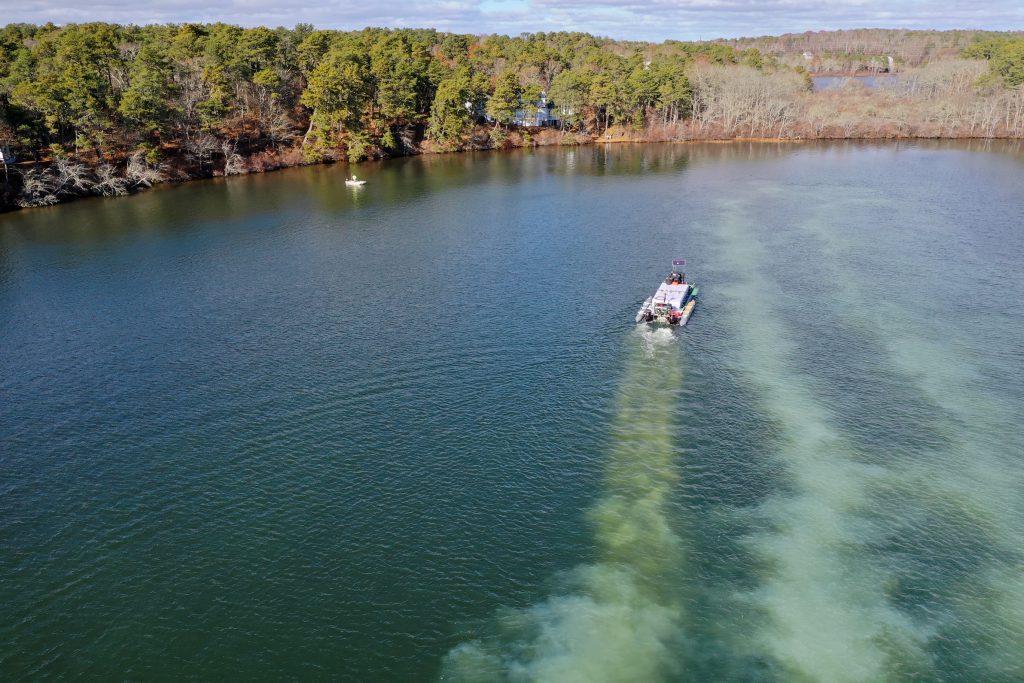
As part of the New Jersey Department of Environmental Protection (NJDEP) Lake Restoration Grant awarded to the Lake Hopatcong Commission, an Alum Treatment will begin on Lake Hopatcong during the week of October 21st. This treatment utilizes aluminum sulfate, a common nutrient inactivation method, to reduce the availability of phosphorus, which contributes to algae and aquatic weed growth.
Alum binds with phosphorus, preventing it from serving as a nutrient source for algae and forming a barrier that inhibits phosphorus release from lake sediments when deep waters become anoxic (without oxygen) during the summer. The goal of this treatment is to minimize the likelihood of harmful algal blooms (HABs) and, in the event of a HAB, to reduce its duration by limiting nutrient availability. We anticipate the Alum Treatment will provide nutrient control for approximately five years. Below are the details regarding the upcoming Alum Treatment.
Treatment Details:
When: Week of October 21st. The contractor, SOLitude Lake Management, will begin staging equipment on October 22nd, with October 29th anticipated as the final day of work. Demobilization is expected on the 30th. Please note, this schedule is weather-dependent and may require additional time.
Where: Equipment will be staged at Lee’s County Marina. The treatment area is 976 acres covering the deepest sections of the lake (greater than 15 feet). Alum Treatment Area Figure
What to Expect During Treatment:
There are no anticipated swimming or fishing restrictions, and the treatment is considered environmentally safe. Treatment barges will apply a flocculant to the water, which will sink through the water column in the deeper areas of the lake. We kindly request that boaters maintain a safe distance from the equipment to allow the contractor to work efficiently. Any questions on the project should be sent to commissioner@lakehopatcongcommission.org.
Funding for this project is provided by a New Jersey Department of Environmental Protection (NJDEP) Lake Restoration Grant through funding by Water Quality Restoration and Federal 319(h) grants

